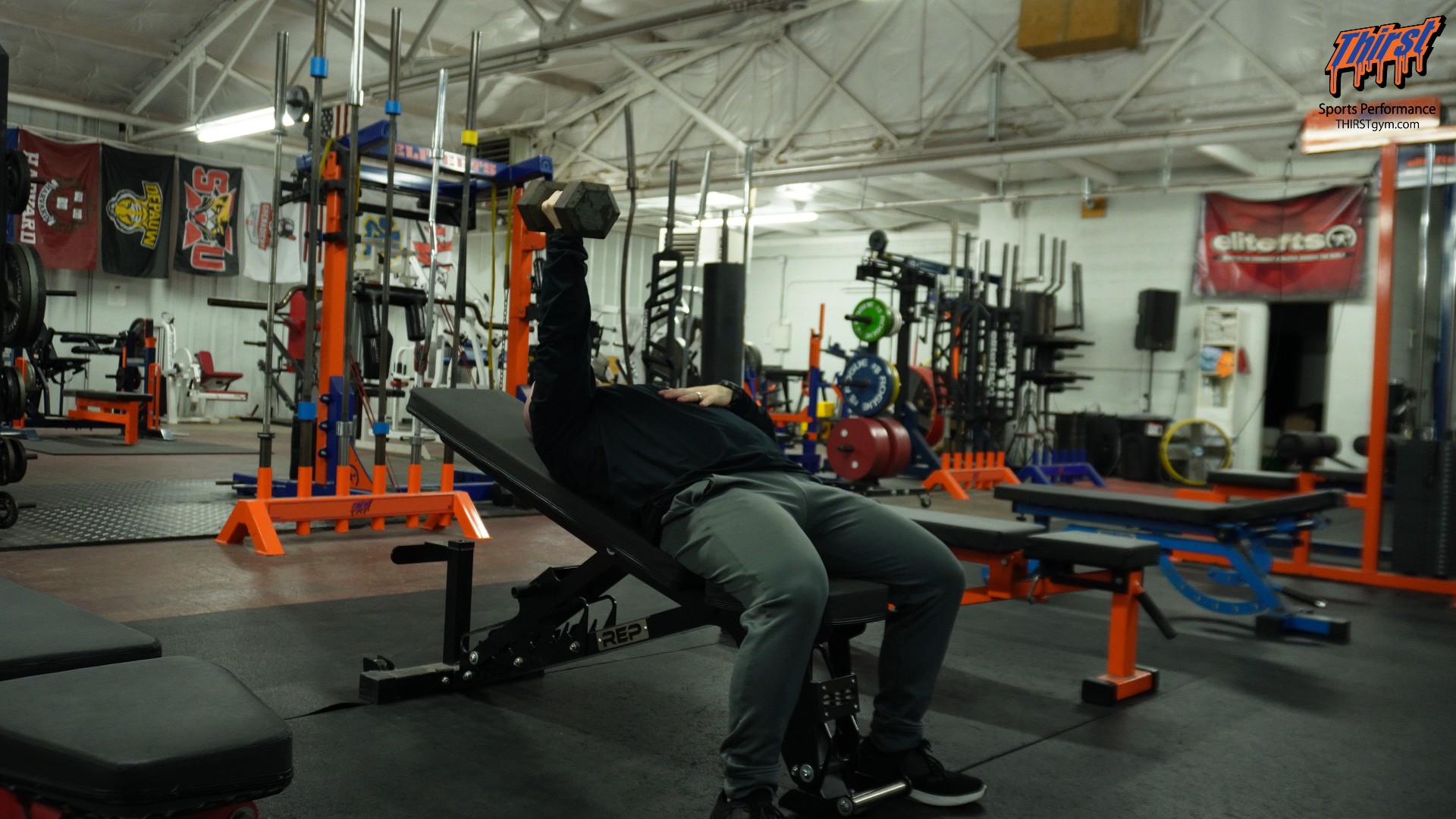The Ultimate Guide to Single Arm Neutral Grip Dumbbell Bench Press: Build Strength While Protecting Your Shoulders
Looking to add a shoulder-friendly pressing variation to your upper body routine? The slight incline single arm neutral grip dumbbell bench press might be exactly what you need. This comprehensive guide will break down everything you need to know about this effective chest, shoulder, and tricep exercise.
Watch the video below on how to maximize this exercise.
What You’ll Need
To perform this exercise effectively, you’ll only need two pieces of equipment:
- A single dumbbell
- An adjustable utility bench or 0-90 degree bench
The Benefits of Single Arm Neutral Grip Press
This variation of the dumbbell bench press offers several unique advantages:
- Enhanced Shoulder Health: The neutral grip position (palm facing your body’s midline) allows for external rotation of the arm, making it significantly more shoulder-friendly than traditional pressing movements.
- Targeted Muscle Development: While primarily targeting the chest, this exercise also engages the shoulders and places additional emphasis on the triceps due to the neutral grip position.
- Core Engagement: The single-arm nature of the movement creates an anti-rotational challenge for your core, providing bonus abdominal work during each set.
- Balanced Strength Development: Working one arm at a time helps identify and address any strength imbalances between sides.
Proper Form and Technique
Setup
- Set your bench to a slight incline (one or two clicks up from flat)
- Position yourself on the bench with feet flat on the floor for maximum stability
- Grasp the dumbbell with a neutral grip, palm facing your body’s midline
- Start with the dumbbell extended toward the ceiling
Execution
- Lower the dumbbell with control, keeping your shoulder blade stable
- Avoid letting your shoulder round forward (anterior translation)
- Lower until you feel a slight stretch in your chest and lat
- Press the weight back up toward the ceiling with control
- Maintain proper positioning throughout the movement
Hand Placement Options
Your free hand can be positioned in one of two ways:
- Across your chest or midsection to feel core engagement
- Extended toward the ceiling, mirroring the working arm
Programming Recommendations
For optimal results, consider the following guidelines:
Sets and Reps:
- 2-4 sets per arm
- 8-15 reps per set
- Can go heavier with 6 reps for strength focus (use caution with heavier weights)
When to Use It:
- As an accessory movement after main pressing exercises
- During rehabilitation or shoulder-sensitive training phases
- To develop unilateral upper body strength
Important Considerations
- Weight Selection: Due to the neutral grip and single-arm nature, you’ll typically use less weight than traditional bench press variations. This is normal and allows for better form and muscle engagement.
- Stability: Ensure your core remains tight and body position stable throughout the movement. Avoid excessive rotation or shifting on the bench.
- Range of Motion: Don’t force a deep stretch at the bottom. Stop when you feel slight tension and maintain shoulder control throughout the movement.
Why This Exercise Works
The slight incline position combined with the neutral grip creates an optimal environment for both muscle development and joint health. It’s particularly beneficial for:
- Those who struggle with overhead pressing
- Athletes looking to maintain shoulder health
- Anyone wanting to add variety to their chest training
Remember, while this exercise is generally shoulder-friendly, always start with lighter weights to master the form before progressing to heavier loads. Pay attention to how your body responds and adjust accordingly.








